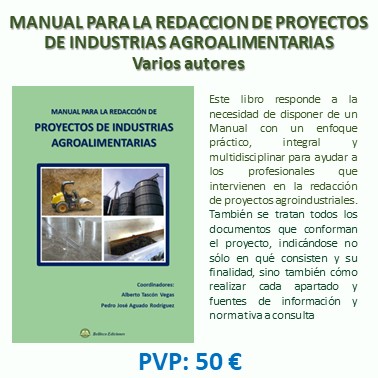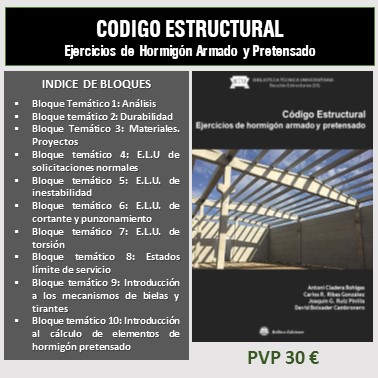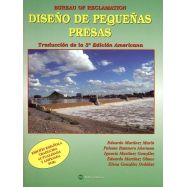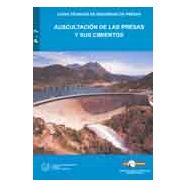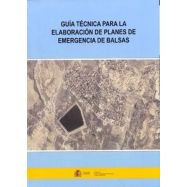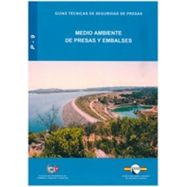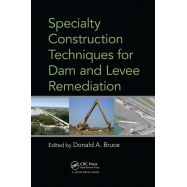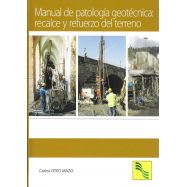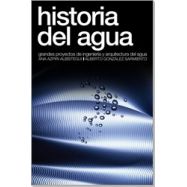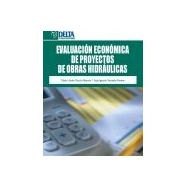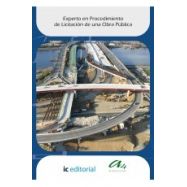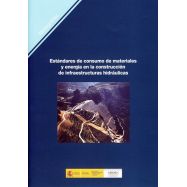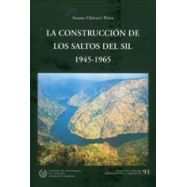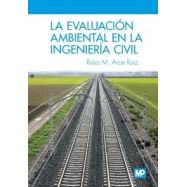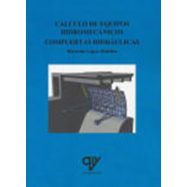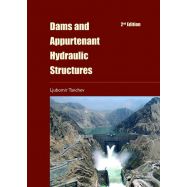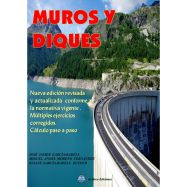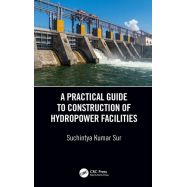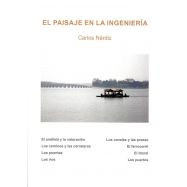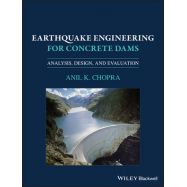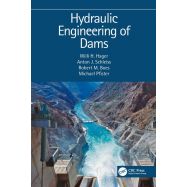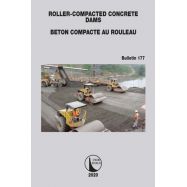Ningún producto
Materias
- BELLISCO EDICIONES. Nuestro Fondo Editorial
- FONDOS EDITORIALES EN DISTRIBUCION
- LIBROS TECNICOS EN INGLES
- ARQUITECTURA - URBANISMO
- AUTOMOCION - MOTORES - VEHICULOS
- AVIONICA - AERONAUTICA
- CALIDAD - EMPRESARIALES - GESTION
- CIENCIAS EXACTAS - MATEMATICAS
- CIENCIAS NATURALES Y APLICADAS
- CIENCIAS DE LA TIERRA - INGENIERIA DEL SUELO
- DICCIONARIOS TECNICOS
- ESTRUCTURAS - CONSTRUCCION
- FORMACION PROFESIONAL
- HIDRAULICA - INGENIERIA SANITARIA - AGUAS
- INGENIERIA CIVIL - OBRAS PUBLICAS
- INGENIERIA MECANICA E INDUSTRIAL
- INSTALACIONES . GENERALES, EN EDIFICACION E INDUSTRIALES
- MATERIALES
- MEDIO AMBIENTE
- NORMATIVA
- OPOSICIONES
- PREVENCION DE RIESGOS LABORALES
- PROGRAMAS INFORMATICOS DE CALCULO
- TECNOLOGIA DE LOS ALIMENTOS: Industrias: Conservación, envasado y cadenas alimentarias
- TELECOMUNICACIONES - INFORMATICA - TECNOLOGIA DE LA INFORMACION
- OUTLET DE BELLISCO: Descuentos de hasta el 80%
- RELIGION, TEOLOGIA, MORAL Y ESPIRITUALIDAD
- VARIOS
- OFERTAS
- PROMOCIONES
- NEWSLETTER
- CATEGORIAS DESTACADAS
- ULTIMAS NOVEDADES BELLISCO
- ARQUITECTURA SOSTENBILE
- URBANISNO
- MATEMATICAS EN GENERAL
- AGRONOMOS-AGRICULTURA-FORESTALES
- ELECTROMAGENTISMO-ELECTRONICA-ELECTRICIDAD
- INGª Y MECÁNICA DEL SUELO. CIMENTACIONES
- TOPOGRAFIA, FOTOGRAMETRÍA, GEODESIA
- EDIFICACION
- ANALISIS DE ESTRUCTURAS, RESISTENCIA DE MATERIALES, ELASTICIDAD, CALCULO MATRICIAL
- OFICIOS VARIOS
- ABASTECIMIENTO Y DISTRIBUCION DE AGUA
- PUENTES
- TUNELES Y OBRAS SUBTERRANEAS
- MAQUINAS Y MECANISMOS
- SOLDADURA
- CLIMATIZACION
- INSTALACIONES DE AGUA
- INSTALACIONES ELECTRICAS CIENCIA E INGENIERIA DE MATERIALES
- ENERGIAS RENOVABLES
- DESARROLLO SOSTENIBLE
- INFORMATICA-SISTEMAS-FORMACION-PROGRAMAS
-
GEOTECHNICAL ENGINEERING OF DAMS. 2n Edition
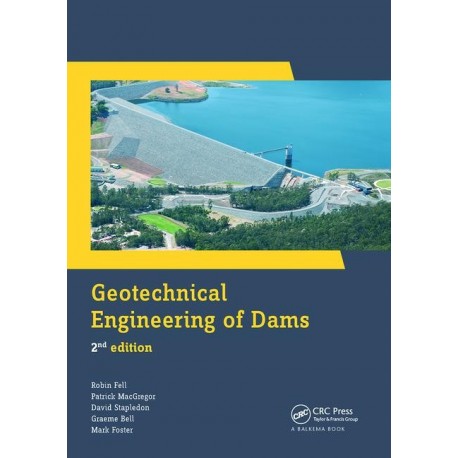 Ver más grande
Ver más grande Referencia: Código 07599
Marzo de 2018 - Robin Fell... - Refª 7599
Robin Fell, Patrick MacGregor, David Stapledon, Graeme Bell, Mark Foster
Marzo de 2018 Páginas: 1348
Código 7599 ISBN/EAN:9781138749344
Features
- Covers all practical aspects of the subject from design to maintenance in a clear, comprehensive manner, and is richly illustrated throughout
- Looks at the review and assessment of existing dams as well as design principles for new dams
- Strong focus on geotechnical engineering and engineering geology
- Compiles decades of research and practical experience in the field of hydraulic (dam) engineering of a suite of renowned academics, engineers and engineering geologists
Summary
Geotechnical Engineering of Dams, 2nd edition provides a comprehensive text on the geotechnical and geological aspects of the investigations for and the design and construction of new dams and the review and assessment of existing dams. The main emphasis of this work is on embankment dams, but much of the text, particularly those parts related to geology, can be used for concrete gravity and arch dams.
All phases of investigation, design and construction are covered. Detailed descriptions are given from the initial site assessment and site investigation program through to the preliminary and detailed design phases and, ultimately, the construction phase. The assessment of existing dams, including the analysis of risks posed by those dams, is also discussed. This wholly revised and significantly expanded 2nd edition includes a lengthy new appendix on the assessment of the likelihood of failure of dams by internal erosion and piping.
This valuable source on dam engineering incorporates the 200+ years of collective experience of the authors in the subject area. Design methods are presented in combination with their theoretical basis, to enable the reader to develop a proper understanding of the possibilities and limitations of a method. For its practical, well-founded approach, this work can serve as a useful guide for professional dam engineers and engineering geologists and as a textbook for university students.
Table of Contents
Author Biographies
1 Introduction
1.1 Outline of the book
1.2 Types of embankment dams and their main features
1.3 Types of concrete dams and their main features
2 Key geological issues
2.1 Basic definitions
2.2 Types of anisotropic fabrics
2.3 Defects in rock masses
2.3.1 Joints
2.3.2 Sheared and crushed zones (faults)
2.3.3 Soil infill seams (or just infill seams)
2.3.4 Extremely weathered (or altered) seams
2.3.5 The importance of using the above terms to describe defects in rock
2.4 Defects in soil masses
2.5 Stresses in rock masses
2.5.1 Probable source of high horizontal stresses
2.5.2 Stress relief effects in natural rock exposures
2.5.3 Effects in claystones and shales
2.5.4 Special effects in valleys
2.5.5 Rock movements in excavations
2.6 Weathering of rocks
2.6.1 Mechanical weathering
2.6.2 Chemical decomposition
2.6.3 Chemical weathering
2.6.3.1 Susceptibility of common minerals to chemical weathering
2.6.3.2 Susceptibility of rock substances to chemical weathering
2.6.4 Weathered rock profiles and their development
2.6.4.1 Climate and vegetation
2.6.4.2 Rock substance types and defect types and pattern
2.6.4.3 Time and erosion
2.6.4.4 Groundwater and topography
2.6.4.5 Features of weathered profiles near valley floors
2.6.5 Complications due to cementation
2.7 Chemical alteration
2.8 Classification of weathered rock
2.8.1 Recommended system for classification of weathered rock substance
2.8.2 Limitations on classification systems for weathered rock
2.9 Rapid weathering
2.9.1 Slaking of mudrocks
2.9.2 Crystal growth in pores
2.9.3 Expansion of secondary minerals
2.9.4 Oxidation of sulphide minerals
2.9.4.1 Sulphide oxidation effects in rockfill dams – some examples
2.9.4.2 Possible effects of sulphide oxidation in rockfill dams
2.9.4.3 Sulphide oxidation – implications for site studies
2.9.5 Rapid solution
2.9.6 Surface fretting due to electro-static moisture absorption
2.10 Landsliding at dam sites
2.10.1 First-time and “reactivated’’ slides
2.10.1.1 Reactivated slides
2.10.1.2 First-time slides
2.10.2 Importance of early recognition of evidence of past slope instability at dam sites
2.10.3 Dams and landslides: Some experiences
2.10.3.1 Talbingo Dam
2.10.3.2 Tooma Dam
2.10.3.3 Wungong Dam
2.10.3.4 Sugarloaf Dam
2.10.3.5 Thomson Dam
2.11 Stability of slopes around storages
2.11.1 Vital slope stability questions for the feasibility and site selection stages
2.11.1.1 Most vulnerable existing or proposed project features, and parts of storage area? – Question 1
2.11.1.2 Currently active or old dormant landslides? – Questions 2 and 4 to 7
2.11.1.3 Areas where first-time landsliding may be induced (Questions 3 to 7)
2.11.1.4 What is the likely post failure velocity and travel distance?
2.11.1.5 What is the size of impulse waves which may be created?
2.12 Watertightness of storages
2.12.1 Models for watertightness of storages in many areas of non-soluble rocks
2.12.2 Watertightness of storage areas formed by soluble rocks
2.12.3 Features which may form local zones of high leakage, from any storage area
2.12.4 Watertightness of storages underlain by soils
2.12.5 Assessment of watertightness
2.12.5.1 Storages in non-soluble rock areas – assessment of watertightness
2.12.5.2 Storages in soluble rock areas – assessment of watertightness
2.12.5.3 Storages formed in soils – assessment of watertightness
2.12.6 Methods used to prevent or limit leakages from storages
3 Geotechnical questions associated with various geological environments
3.1 Granitic rocks
3.1.1 Fresh granitic rocks, properties and uses
3.1.2 Weathered granitic rocks, properties, uses and profiles
3.1.3 Stability of slopes in granitic rocks
3.1.4 Granitic rocks: check list
3.2 Volcanic rocks (intrusive and flow)
3.2.1 Intrusive plugs, dykes and sills
3.2.2 Flows
3.2.2.1 Flows on land
3.2.2.2 Undersea flows
3.2.3 Alteration of volcanic rocks
3.2.4 Weathering of volcanic rocks
3.2.5 Landsliding on slopes underlain by weathered basalt
3.2.6 Alkali-aggregate reaction
3.2.7 Volcanic rocks (intrusive and flow) check list of questions
3.3 Pyroclastics 1
3.3.1 Variability of pyroclastic materials and masses
3.3.2 Particular construction issues in pyroclastics
3.3.3 Pyroclastic materials – check list of questions
3.4 Schistose rocks
3.4.1 Properties of fresh schistose rock substances
3.4.2 Weathered products and profiles developed in schistose rock
3.4.3 Suitability of schistose rocks for use as filter materials, concrete aggregates and pavement materials
3.4.4 Suitability of schistose rocks for use as rockfill
3.4.5 Structural defects of particular significance in schistose rocks
3.4.5.1 Minor faults developed parallel and at acute angles to the foliation
3.4.5.2 Kink bands
3.4.5.3 Mica-rich layers
3.4.6 Stability of slopes formed by schistose rocks
3.4.7 Schistose rocks – check list of questions
3.5 Mudrocks
3.5.1 Engineering properties of mudrocks
3.5.2 Bedding-surface faults in mudrocks
3.5.3 Slickensided joints or fissures
3.5.4 Weathered products and profiles in mudrocks
3.5.5 Stability of slopes underlain by mudrocks
3.5.6 Development of unusually high pore pressures
3.5.7 Suitability of mudrocks for use as construction materials
3.5.8 Mudrocks – check list of questions
3.6 Sandstones and related sedimentary rocks
3.6.1 Properties of the rock substances
3.6.2 Suitability for use as construction materials
3.6.3 Weathering products
3.6.4 Weathered profile and stability of slopes
3.6.5 Sandstones and similar rocks – list of questions
3.7 Carbonate rocks
3.7.1 Effects of solution
3.7.1.1 Rock masses composed of dense, fine grained rock substances comprising more than 90% of carbonate (usually Category O)
3.7.1.2 Rock masses composed of dense fine grained rock substance containing 10% to 90% of carbonate (usually Category O)
3.7.1.3 Rock masses composed of porous, low density carbonate rock substance (usually Category Y)
3.7.2 Watertightness of dam foundations
3.7.2.1 Dams which have experienced significant leakage problems
3.7.3 Potential for sinkholes to develop beneath a dam, reservoir or associated works
3.7.4 Potential for continuing dissolution of jointed carbonate rock in dam foundations
3.7.5 Potential for continuing dissolution of aggregates of carbonate rock particles and of permeable carbonate substances (Category O carbonate, in each case)
3.7.6 Discussion – potential for continuing dissolution of carbonate rocks in foundations
3.7.6.1 Category O carbonate rocks
3.7.6.2 Category Y carbonate rocks
3.7.7 Potential problems with filters’ composed of carbonate rocks
3.7.7.1 Category O carbonate rocks
3.7.7.2 Category Y carbonate materials
3.7.8 Suitability of carbonate rocks for embankment materials
3.7.9 Suitability of carbonate rocks for concrete and pavement materials
3.7.10 Stability of slopes underlain by carbonate rocks
3.7.11 Dewatering of excavations in carbonate rocks
3.7.12 Carbonate rocks – check list of questions
3.8 Evaporites
3.8.1 Performance of dams built on rocks containing evaporites
3.8.2 Guidelines for dam construction at sites which contain evaporites
3.8.3 Evaporites – checklist of questions
3.9 Alluvial soils
3.9.1 River channel deposits
3.9.2 Open-work gravels
3.9.3 Oxbow lake deposits
3.9.4 Flood plain, lacustrine and estuarine deposits
3.9.5 Use of alluvial soils for construction
3.9.6 Alluvial soils, list of questions
3.10 Colluvial soils
3.10.1 Occurrence and description
3.10.1.1 Scree and talus
3.10.1.2 Slopewash soils
3.10.1.3 Landslide debris
3.10.2 Properties of colluvial soils
3.10.2.1 Scree and talus
3.10.2.2 Slopewash
3.10.2.3 Landslide debris
3.10.3 Use as construction materials
3.10.4 Colluvial soil – list of questions
3.11 Laterites and lateritic weathering profiles
3.11.1 Composition, thicknesses and origin of lateritic weathering profiles
3.11.2 Properties of lateritic soils
3.11.3 Use of lateritic soils for construction
3.11.4 Karstic features developed in laterite terrain
3.11.5 Recognition and interpretation of silcrete layer
3.11.6 Lateritic soils and profiles – list of questions
3.12 Glacial deposits and landforms
3.12.1 Glaciated valleys
3.12.2 Materials deposited by glaciers
3.12.2.1 Properties of till materials
3.12.2.2 Disrupted bedrock surface beneath glaciers
3.12.3 Glaciofluvial deposits
3.12.4 Periglacial features
3.12.5 Glacial environment – list of questions
4 Planning, conducting and reporting of geotechnical investigations
4.1 The need to ask the right questions
4.1.1 Geotechnical engineering questions
4.1.2 Geological questions
4.1.2.1 Questions relating to rock and soil types, climate and topography
4.1.2.2 Questions relating to geological processes, i.e. to the history of development of the site
4.1.3 Geotechnical questions for investigations of existing dams
4.2 Geotechnical input at various stages of project development
4.3 An iterative approach to the investigations
4.4 Progression from regional to local studies
4.4.1 Broad regional studies
4.4.1.1 Objectives
4.4.1.2 Activities
4.4.2 Studies at intermediate and detailed scales
4.4.2.1 Objectives
4.4.2.2 Activities
4.5 Reporting
4.6 Funding of geotechnical studies
4.7 The site investigation team
5 Site investigation techniques
5.1 Topographic mapping and survey
5.2 Interpretation of satellite images aerial photographs and photographs taken during construction
5.2.1 Interpretation of satellite images
5.2.2 Interpretation of aerial photographs
5.2.2.1 Coverage
5.2.2.2 Interpretation
5.2.3 Photographs taken during construction
5.3 Geomorphological mapping
5.4 Geotechnical mapping
5.4.1 Use of existing maps and reports
5.4.2 Geotechnical mapping for the project
5.4.2.1 Regional mapping
5.4.2.2 Geotechnical mapping
5.5 Geophysical methods, surface and downhole
5.5.1 Surface geophysical methods
5.5.1.1 Seismic refraction
5.5.1.2 Self potential
5.5.1.3 Electrical resistivity
5.5.1.4 Electromagnetic conductivity
5.5.1.5 Magnetic
5.5.1.6 Microgravity
5.5.1.7 Ground penetrating radar
5.5.2 Down-hole logging of boreholes
5.5.3 Cross-hole and up-hole seismic
5.6 Test pits and trenches
5.6.1 Test pits
5.6.2 Trenches
5.7 Sluicing
5.8 Adits and shafts
5.9 Drill holes
5.9.1 Drilling objectives
5.9.2 Drilling techniques and their application
5.9.3 Auger drilling
5.9.4 Percussion drilling
5.9.5 Rotary drilling
5.9.6 Sonic drilling
5.10 Sampling
5.10.1 Soil samples
5.10.2 Rock samples
5.11 In situ testing
5.11.1 In situ testing in soils
5.11.2 In situ testing of rock
5.11.2.1 Borehole orientation
5.11.2.2 Borehole impression packer
5.11.2.3 Borehole imaging
5.12 Groundwater
5.13 In situ permeability tests on soil
5.14 In situ permeability tests in rock
5.14.1 Lugeon value and equivalent rock mass permeability
5.14.2 Test methods
5.14.3 Selection of test section
5.14.4 Test equipment
5.14.4.1 Packers
5.14.4.2 Water supply system
5.14.4.3 Selection of test pressures
5.14.5 Test procedure
5.14.5.1 Presentation and interpretation of results
5.15 Use of surface survey and borehole inclinometers
5.15.1 Surface survey
5.15.2 Borehole inclinometers
5.16 Common errors and deficiencies in geotechnical investigation
6 Shear strength, compressibility and permeability of embankment materials and soil foundations
6.1 Shear strength of soils
6.1.1 Drained strength – definitions
6.1.2 Development of drained residual strength φR
6.1.3 Undrained strength conditions
6.1.4 Laboratory testing for drained strength parameters, and common errors
6.1.4.1 Triaxial test
6.1.4.2 Direct shear test
6.1.4.3 Ring shear test
6.1.4.4 Comparison of field residual with laboratory residual strength obtained from direct shear and ring shear
6.1.5 Laboratory testing for undrained strength
6.1.6 Estimation of the undrained strength from the Over-Consolidation Ratio (OCR), at rest earth pressure coefficient Ko, and effective stress strengths
6.1.6.1 Estimation of undrained strength from OCR
6.1.6.2 Estimation of undrained strength from effective stress shear parameters
6.1.7 Estimation of the undrained strength of cohesive soils from in situ tests
6.1.7.1 Cone Penetration and Piezocone Tests
6.1.7.2 Vane shear
6.1.7.3 Self Boring Pressuremeter
6.1.8 Shear strength of fissured soils
6.1.8.1 The nature of fissuring, and how to assess the shear strength
6.1.8.2 Triaxial testing of fissured soils
6.1.9 Estimation of the effective friction angle of granular soils
6.1.9.1 Methods usually adopted
6.1.9.2 In situ tests
6.1.9.3 Laboratory tests
6.1.9.4 Empirical estimation
6.1.10 Shear strength of partially saturated soils
6.2 Shear strength of rockfill
6.3 Compressibility of soils and embankment materials
6.3.1 General principles
6.3.1.1 Within the foundation
6.3.1.2 Within the embankment
6.3.2 Methods of estimating the compressibility of earthfill, filters and rockfill
6.3.2.1 Using data from the performance of other dams – earthfill
6.3.2.2 Using data from the performance of other dams – rockfill
6.3.2.3 In situ testing
6.3.2.4 Laboratory testing
6.3.2.5 Tensile properties of plastic soils
6.4 Permeability of soils
6.4.1 General principles
6.4.2 Laboratory test methods
6.4.3 Indirect test methods
6.4.3.1 Oedometer and triaxial consolidation test
6.4.3.2 Estimation of permeability of sands from particle size distribution
6.4.4 Effects of poor sampling on estimated permeability in the laboratory
6.4.5 In situ testing methods
7 Clay mineralogy, soil properties, and dispersive soils
7.1 Introduction
7.2 Clay minerals and their structure
7.2.1 Clay minerals
7.2.2 Bonding of clay minerals
7.2.2.1 Primary bonds
7.2.2.2 Secondary bonds
7.2.3 Bonding between layers of clay minerals
7.3 Interaction between water and clay minerals
7.3.1 Adsorbed water
7.3.2 Cation exchange
7.3.3 Formation of diffuse double layer
7.3.4 Mechanism of dispersion
7.4 Identification of clay minerals
7.4.1 X-ray diffraction
7.4.2 Differential Thermal Analysis (DTA)
7.4.3 Electron microscopy
7.4.4 Atterberg limits
7.4.5 The activity of the soil
7.5 Engineering properties of clay soils related to the types of clay minerals
7.5.1 Dispersivity
7.5.2 Shrink and swell characteristics
7.5.3 Shear strength
7.5.4 Erosion properties
7.6 Identification of dispersive soils
7.6.1 Laboratory tests
7.6.1.1 Emerson class number
7.6.1.2 Soil Conservation Service test
7.6.1.3 Pinhole dispersion classification
7.6.1.4 Chemical tests
7.6.1.5 Recommended approach
7.6.2 Field identification and other factors
7.7 Use of dispersive soils in embankment dams
7.7.1 Problems with dispersive soils
7.7.2 Construction with dispersive soils
7.7.2.1 Provide properly designed and constructed filters
7.7.2.2 Proper compaction of the soil
7.7.2.3 Careful detailing of pipes or conduits through the embankment
7.7.2.4 Lime or gypsum modification of the soil
7.7.2.5 Sealing of cracks in the abutment and cutoff trench
7.7.3 Turbidity of reservoir water
8 Internal erosion and piping of embankment dams and in dam foundations
8.1 The importance of internal erosion and piping to dam safety
8.2 Description of the internal erosion and piping process
8.2.1 The overall process leading to failure of a dam
8.2.2 Initiation of internal erosion
8.2.3 Continuation of erosion
8.2.4 Progression of erosion
8.2.5 Detection and intervention
8.2.6 Breach
8.3 Concentrated leak erosion
8.3.1 The overall process
8.3.2 Situations where cracking and low stress zones may be present in an embankment or the foundation
8.3.2.1 Cracking and hydraulic fracture due to cross valley differential settlement of the core
8.3.2.2 Cracking and hydraulic fracture due to cross valley arching
8.3.2.3 Cracking and hydraulic fracture due to differential settlement in the foundation under the core
8.3.2.4 Cracking and hydraulic fracture due to small scale irregularities in the foundation profile under the core
8.3.2.5 Cracking due to lack of support for the core by the shoulders of the embankment
8.3.2.6 Cracking and hydraulic fracture due to arching of the core onto the shoulders of the embankment
8.3.2.7 Crack or gap adjacent to a spillway or abutment walls and where concrete dams abut embankment dams
8.3.2.8 Crack or hydraulic fracture in poorly compacted layers in the embankment
8.3.2.9 Internal erosion associated with conduits embedded in the embankment
8.3.2.10 Cracking due to desiccation
8.3.2.11 Transverse cracking caused by settlement during earthquakes
8.3.2.12 Cracking or high permeability layers due to freezing
8.3.2.13 Internal erosion initiated by the effects animal burrows and vegetation
8.3.2.14 Relative importance of conduits, spillway walls cracking mechanisms, and poorly compacted zones
8.3.3 Estimation of crack width and depth of cracking
8.3.3.1 Cracking due to differential settlement, adjacent walls
8.3.3.2 Cracks formed by collapse settlement of poorly compacted soil
8.3.4 The mechanics of erosion in concentrated leaks
8.3.4.1 The procedure for assessing whether erosion will initiate
8.3.4.2 The estimation of hydraulic shear stresses in cracks and pipes
8.3.4.3 Erosion properties of soils in the core of embankment dams – basic principles
8.3.4.4 Effect of degree of saturation of the soil
8.3.4.5 Effect of the testing method on the critical shear stress to initiate erosion (τc) and the erosion rate index
8.3.4.6 Effect of dispersion, slaking, soil structure and shear strength on erosion properties
8.3.5 Comparison of the hydraulic shear stress in the crack (τ) to the critical shear stress which will initiate erosion for the soil in the core of the embankment (τc)
8.4 Backward erosion
8.4.1 General description of backward erosion
8.4.2 Experimental modelling of backward erosion piping
8.4.3 Methods for predicting whether backward erosion piping will initiate and progress
8.4.3.1 Empirical rules for estimating a factor of safety
8.4.3.2 Terzaghi and Peck (1948)
8.4.3.3 Sellmeijer and co-workers at Deltares method
8.4.3.4 Schmertmann method
8.4.4 Some field observations
8.4.5 Suggested approach to design for and assessing backward erosion piping
8.4.6 Guidance on whether the overlying soil will form a roof to the pipe
8.4.7 Methods for prediction of initiation and progression of global backward erosion
8.5 Suffusion of internally unstable soils
8.5.1 General description of suffusion
8.5.2 Methods of identifying soils which are internally unstable and potentially subject to suffusion
8.5.2.1 General requirements
8.5.2.2 Some methods for assessing whether a soil is internally unstable
8.5.2.3 Some general comments
8.5.3 Assessment of the gradation after suffusion
8.5.4 Assessment of the seepage gradient which will cause suffusion
8.5.5 Some general comments
8.5.5.1 Need for project specific laboratory tests
8.5.5.2 Do not use “average’’ soil gradations
8.5.5.3 Allow for the effects of segregation when assessing suffusion
8.6 Contact erosion
8.6.1 General description of contact erosion
8.6.2 Methods for predicting initiation and progression of contact erosion
8.6.2.1 Non plastic sand below a coarse soil layer
8.6.2.2 Non plastic silt and clay (particles <75μm) below a coarse layer
8.6.2.3 Non-plastic silt above a coarse soil layer
8.6.2.4 General comment
8.6.3 Contact erosion or scour of the dam core into open joints in rock in the foundation
8.7 Continuation and filter action
8.8 Progression of erosion
8.8.1 General description
8.8.2 Overall approach for assessing progression for concentrated leak erosion
8.8.3 Assessing whether the soil will hold a roof to a developing pipe
8.8.4 Assessing whether crack filling action will occur
8.8.4.1 Internal erosion in the embankment
8.8.4.2 Internal erosion through the foundation
8.8.4.3 Internal erosion of the embankment into or at the foundation
8.8.5 Assessing whether upstream flow limitation will occur
8.8.6 Assessing the rate of development of the pipe
8.9 Detection of internal erosion and piping
8.9.1 General principles
8.9.2 Some information on the rate of internal erosion and piping
8.9.3 The likelihood of detection and intervention
8.10 Intervention and repair
8.11 Initiation of breach
8.11.1 General principles
8.11.2 Breach by gross enlargement
8.11.3 Breach by slope instability
8.11.4 Breach by unravelling or sloughing
8.11.5 Breach by sinkhole development leading to loss of freeboard
8.12 Assessment of the likelihood of internal erosion and piping in existing dams
8.12.1 General procedure
8.12.2 The importance of having complete and reliable information upon which to make the assessment of internal erosion
8.12.2.1 Geometric model
8.12.2.2 Geological model of the foundation
8.12.2.3 Geotechnical model of the embankment and foundations
8.12.2.4 Hydraulic or seepage model
8.12.2.5 Stress state in the dam and its foundation
8.12.2.6 General comments
8.12.3 Loading conditions
8.12.3.1 Reservoir level loading
8.12.3.2 Earthquake loading
8.12.4 Potential Failure Modes Analysis (PFMA)
8.12.5 Screening of potential failure modes
8.12.5.1 Screening of PFM on the zoning of the dam and the properties of the core of the embankment
8.12.5.2 Screening of PFM on foundation geology and properties
8.12.5.3 Screening of PFM on details of the embankment foundation geometry, compaction of the core, and conduits and retaining walls
8.12.6 Estimation of likelihoods of failure for the Potential Failure Modes applicable to the dam
8.12.6.1 Some general principles
8.12.6.2 Summary of how to estimate conditional probabilities within the event tree
8.12.6.3 Ways in which the safety of the dam against internal erosion and piping can be considered
8.12.6.4 Quantitative risk analysis methods for internal erosion and piping
9 Design, specification and construction of filters
9.1 General requirements for design and the function of filters
9.1.1 Functional requirements
9.1.2 Flow conditions acting on filters
9.1.3 Critical and non critical filters
9.1.4 Filter design notation and concepts
9.1.4.1 Notation
9.1.4.2 Filtering concepts
9.1.4.3 Laboratory test equipment
9.2 Design of critical and non-critical filters
9.2.1 Particle size based methods for designing no erosion filters with flow normal to the filter
9.2.1.1 Original USBR method
9.2.1.2 Sherard and Dunnigan method
9.2.1.3 Foster and Fell method
9.2.1.4 Vaughan and Soares method
9.2.2 Methods based on constriction or opening size
9.2.3 Methods based on the permeability of the filter
9.2.3.1 Delgardo and co-workers
9.2.3.2 Vaughan and Soares, Vaughan and Bridle method
9.2.4 Recommended method for design of critical no erosion filters, with flow normal to the filter
9.2.5 Recommended method for design of less critical and non-critical filters
9.2.5.1 Filters upstream of the dam core
9.2.5.2 Filters under rip-rap
9.2.6 Review of available methods for designing filters with flow parallel to the filter
9.2.7 Design criteria for pipe drains and pressure relief well screens
9.2.7.1 Pipe drains
9.2.7.2 Pressure relief well screens
9.2.8 Other factors affecting filter design and performance
9.2.8.1 Criteria to assess internal instability or suffusion
9.2.8.2 Segregation
9.2.8.3 Ability of the filter to hold a crack
9.2.8.4 Permeability
9.2.8.5 “Blow-out’’ or “heave’’ of the filter
9.3 Assessing filters and transition zones in existing dams
9.3.1 Some general issues and concepts
9.3.2 Continuing and excessive erosion criteria
9.3.3 Discussion of continuation scenarios in existing dams
9.3.3.1 Internal erosion in the embankment, from the embankment into the foundation or into openings in conduits passing through the embankment
9.3.3.2 Internal erosion in the foundation
9.3.3.3 Internal erosion of the embankment at or into the foundation
9.3.4 Assessment of the likelihood of continuation where a filter/transition zone does not satisfy no-erosion filter criteria
9.3.4.1 General principles
9.3.4.2 Details of how to apply the Foster and Fell (1999a, 2001) method for assessing the likelihood of continuation of erosion for filters and transitions which do not meet modern filter design criteria
9.3.5 Assessment of the likelihood of continuation for internal erosion into an open defect, joint or crack in the foundation, in a wall or conduit
9.4 Specification of particle size and durability of filters
9.4.1 Particle size distribution
9.4.2 Durability
9.4.2.1 Standard tests for durability and particle shape
9.4.2.2 Possible effects if carbonate rocks are used as filter materials
9.4.2.3 Effects if rocks containing sulphide minerals are used as filter materials
9.4.2.4 Other investigations for filter materials
9.4.3 Contractual difficulties associated with gradation and durability of filters
9.4.3.1 Fines content
9.4.3.2 Use of crushed rock for fine filters
9.5 Dimensions, placement and compaction of filters
9.5.1 Dimensions and method of placement of filters
9.5.1.1 Some general principles
9.5.1.2 Placement methods
9.5.2 Sequence of placement of filters and control of placement width and thickness
9.5.3 Compaction of filters
9.6 Use of geotextiles as filters in dams
9.6.1 Types and properties of geotextiles
9.6.2 Geotextile filter design criteria
9.6.2.1 General requirements
9.6.2.2 Filtering requirement
9.6.2.3 Clogging and blinding resistance
9.6.2.4 Permeability requirement
9.6.2.5 Durability or “survivability’’ requirement
9.6.2.6 Use of geotextile filters in dams
9.6.2.7 Construction factors
9.6.2.8 Sources of detailed information
10 Embankment dams, their zoning and design for control of seepage and internal erosion and piping
10.1 Historic performance of embankment dams and the lessons to be learned
10.2 Types of embankment dams, their advantages and limitations
10.2.1 The main types of embankment dams and zoning
10.2.2 The general principles of control of seepage pore pressures and internal erosion and piping
10.2.3 Taking account of the likelihood and consequences of failure in selecting the type of embankment
10.2.4 Types of embankment dams, their advantages, limitations and applicability
10.3 Zoning of embankment dams and typical construction materials
10.3.1 General principles
10.3.2 Examples of embankment designs
10.3.2.1 Zoned earthfill dams
10.3.2.2 Earthfill dams with horizontal and vertical drains
10.3.2.3 Central core earth and rockfill dams
10.3.2.4 Sloping upstream core earth and rockfill dam
10.3.2.5 Concrete face rockfill dams
10.4 Selection of embankment type
10.4.1 Availability of construction materials
10.4.1.1 Earthfill
10.4.1.2 Rockfill
10.4.1.3 Filters and filter drains
10.4.2 Foundation conditions
10.4.3 Climate
10.4.4 Topography and relation to other structures
10.4.5 Saddle dam
10.4.6 Staged construction
10.4.7 Time for construction
10.5 General requirements and methods of control of seepage and internal erosion and piping in embankment dams and their foundations
10.6 Some particular features of rock and soil foundations which affect seepage and internal erosion control
10.7 Details of some measures for pore pressure and seepage flow control
10.7.1 Horizontal and vertical drains in the embankment
10.7.2 Treatment of the sides of the cutoff trench
10.7.3 Prevention of critical seepage gradients and heave of the foundation
10.7.4 Design of pressure relief wells
10.8 Control of foundation seepage and internal erosion and piping by cutoffs
10.8.1 General effectiveness of cutoffs
10.8.2 Cutoff trench
10.8.3 Slurry trench cutoff backfilled with bentonite-sand-gravel
10.8.4 Grout diaphragm wall
10.8.5 Diaphragm wall using rigid or plastic concrete
10.8.6 Methods of excavation of diaphragm walls
10.8.7 Permeability and performance of cutoff walls
10.8.8 We live in a three dimensional world
10.9 Examples of dam upgrades to address deficiencies in internal erosion and piping control
10.9.1 Upgrades to reduce the likelihood of continuation of erosion by providing filters and cutoffs
10.9.2 Upgrades to reduce the likelihood of breach
11 Analysis of stability and deformations
11.1 Analysis of stability and deformations methods of analysis
11.2 Limit equilibrium analysis methods
11.2.1 General characteristics
11.2.2 Some common problems
11.2.3 Three dimensional analysis
11.2.4 Shear strength of partially saturated soils
11.3 Selection of shear strength for design
11.3.1 Drained, effective stress parameters
11.3.1.1 Peak, residual or fully softened strength in clay soils?
11.3.1.2 Selection of design parameters in clay soils
11.3.1.3 Selection of design parameters – granular soils and rockfill
11.3.2 Undrained, total stress parameters
11.3.2.1 Triaxial compression, extension or direct simple shear strength
11.3.2.2 Selection of design parameters
11.3.3 Inherent soil variability
11.4 Estimation of pore pressures and selection of strengths for steady state, construction and drawdown conditions 11.4.1 Steady state seepage condition
11.4.1.1 Steady state pore pressures
11.4.1.2 Pore pressures under flood conditions
11.4.2 Pore pressures during construction and analysis of stability at the end of construction
11.4.2.1 Some general principles
11.4.2.2 Estimation of construction pore pressures by Skempton (1954) method
11.4.2.3 Estimation of construction pore pressures from drained and specified undrained strengths
11.4.2.4 Estimation of pore pressures using advanced theory of partially saturated soil
11.4.2.5 Undrained strength analysis
11.4.2.6 Summing up
11.4.3 Drawdown pore pressures and the analysis of stability under drawdown conditions
11.4.3.1 Some general issues
11.4.3.2 Estimation of drawdown pore pressures, excluding the effects of shear-induced pore pressures
11.4.3.3 Methods for assessment of the stability under drawdown conditions
11.4.3.4 Some detailed issues for drawdown analyses
11.5 Design acceptance criteria
11.5.1 Acceptable factors of safety
11.5.2 Post failure deformation assessment
11.6 Examples of unusual issues in analysis of stability
11.6.1 Hume No. 1 Embankment
11.6.2 Eppalock Dam
11.6.3 The lessons learnt
11.7 Analysis of deformations
11.7.1 Analyses of embankment cross sections
11.7.2 Cross valley deformation analyses
11.8 Probabilistic analysis of the stability of slopes
12 Design of embankment dams to withstand earthquakes
12.1 Effect of earthquake on embankment dams
12.2 Earthquakes and their characteristics
12.2.1 Earthquake mechanisms and ground motion
12.2.2 Earthquake magnitude and intensity
12.2.3 Attenuation and amplification of ground motion
12.2.4 Earthquakes induced by the reservoir
12.3 Evaluation of seismic hazard
12.3.1 Terminology
12.3.2 General principles of seismic hazard assessment
12.3.2.1 Probabilistic approach
12.3.2.2 Seismic hazard from known active or capable faults
12.3.3 Other forms of expression of seismic hazard
12.3.4 Selection of design seismic loading
12.3.4.1 Deterministic approach
12.3.4.2 Risk based approach
12.3.4.3 Which approach to use?
12.3.5 Modelling vertical ground motions
12.3.6 The need to get good seismological advice
12.4 Principles of risk based analyses for earthquake loads
12.4.1 General principles
12.4.2 Failure by loss of freeboard and overtopping
12.4.3 Failure by cracking and internal erosion and piping
12.5 Liquefaction of dam embankments and foundations
12.5.1 Definitions and the mechanics of liquefaction
12.5.1.1 Definitions
12.5.1.2 Some consideration of the mechanics of liquefaction of granular soils
12.5.1.3 Suggested flow chart for evaluation of soil liquefaction
12.5.2 Soils susceptible to liquefaction
12.5.2.1 Methods based on soil classification and in situ moisture content
12.5.2.2 Discussion and recommended approach
12.5.2.3 Methods based on geology and age of the deposit
12.5.3 The “simplified procedure’’ for assessing liquefaction resistance of a soil
12.5.3.1 Background to the simplified method
12.5.3.2 Discussion of differences between the Youd et al. (2001), Seed et al. (2003) and Idriss and Boulanger (2008) methods
12.5.3.3 The simplified method – outline
12.5.3.4 Evaluation of Cyclic Stress Ratio (CSR)
12.5.3.5 Evaluation of Cyclic Resistance Ratio for M7.5 earthquakes (CRR7.5) from the Standard Penetration Tests using the Boulanger and Idriss (2012), Idriss and Boulanger (2008) method
12.5.3.6 Evaluation of the Cyclic Resistance Ratio for M7.5 earthquake (CRR7.5) from Cone Penetration Tests using the Idriss and Boulanger (2008) method
12.5.3.7 Evaluation of Cyclic Resistance Ratio for M7.5 earthquake (CRR7.5) from shear wave velocity using the Andrus and Stokoe (2000) method
12.5.3.8 Earthquake magnitude scaling factors and factor of safety against liquefaction
12.5.3.9 Corrections for overburden stress and static shear stress
12.5.3.10 Allowance for the age of the soil deposit
12.6 Liquefied undrained shear strength and post earthquake stability analysis
12.6.1 Some general principles
12.6.2 Background to the assessment of the liquefied shear strength Su(LIQ)
12.6.3 Some methods for assessing the strength of liquefied soils in the embankment and foundation
12.6.3.1 “Critical State’’ based methods
12.6.3.2 Normalized strength ratio methods
12.6.3.3 Other methods
12.6.4 Some other factors to consider
12.6.5 Recommended approach to assessing the liquefied undrained strength soils of in the embankment and foundation
12.6.6 Methods for assessing the post earthquake strength of non-liquefied soils in the embankment and foundation
12.6.6.1 Saturated potentially liquefiable soils
12.6.6.2 Cyclic softening in clays and plastic silts
12.6.6.3 Compacted plastic and non-plastic soils
12.6.7 Liquefaction potential and limit equilibrium stability analysis
12.6.8 Site investigations requirements and development of geotechnical model of the foundation
12.7 Seismic deformation analysis of emb
TAMBIEN LE PUEDE INTERESAR
- 90,00 €
- 30,00 €
- 25,00 €
- 20,00 €
- 60,00 €
- 60,00 €
- 104,75 €
- 49,40 €

